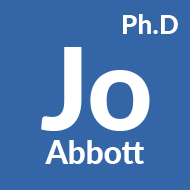Learn the sciences of how active touch becomes data, and how to get the best out of your practices.
Hands-On Data Acquisition & Analysis
Clinical Anatomy
Apply your anatomical knowledge to diagnosis and treatment whilst exploring the human form for movement potential.
Clinical Nutriment
Introduce the foundations to clinical biomechanics by understanding the science of nutrients serving to sustain it in its existence, promoting growth, replacing loss, and providing energy.
Clinical Biomechanics
Explore all facets of body system, organ, tissue and cell biomechanics, with an emphasis on medical and clinical applications of the basic science aspects.
Hands-On Data Acquisition & Analysis (HODA-A) Curriculum
I am text block. Click edit button to change this text. Lorem ipsum dolor sit amet, consectetur adipiscing elit. Ut elit tellus, luctus nec ullamcorper mattis, pulvinar dapibus leo.
Clinical Anatomy Curriculum
Anatomy is the branch of science concerned with the bodily structure of humans, animals, and other living organisms, especially as revealed by dissection and the separation of parts.
Clinical Anatomy is the study of human anatomy as it relates to clinical practice. Instead of being designed to allow someone to acquire general anatomical knowledge, clinical anatomy focuses on specific structures and issues which people may encounter in a clinical setting.
We shall be exploring many historical aspects of our anatomy, from it’s origins of species to some of the greatest anatomical discoveries allowing us to develop our senses of what we see and feel on a day-to-day basis.
Your learning will be supported with the evidence based medicine research, critical analyses, and one of the greatest opportunities to learn within an anatomy lab dissecting the human form.
Upon signing up for your BodyMOT Coaching in Clinical Anatomy you will have access to Forums, Skypes, and Practical days with other professionals to discuss and debate your thoughts.
Unit 1: Lymphatic System.
Unit 2: Musculoskeletal System
Unit 3: Integumentary System
Unit 4: Respiratory System
Unit 5: Reproductive System
Unit 6: Digestive System
Unit 7: Urinary System
Unit 8: Anomalies
Unit 1: Circulatory System
Unit 2: Circulatory System
Unit 3: Nervous System
Unit 4: Nervous System
Unit 5: Nervous System
Unit 6: Immune System
Unit 7: Immune System
Unit 8: Endocrine System
Unit 1: Simeon Gait
Unit 2: Sliding Rib Syndrome
Unit 3: Piriformis Syndrome
Unit 4: Iliotibial Band Friction Syndrome
Unit 5: Postural Deviations
Unit 6: Impingement Syndrome
Unit 7: Plantar Fasciitis
Unit 8: Bursitis
Unit 1: Premature Ageing
Unit 2: Premature Ageing
Unit 3: Optimising Anatomy
Unit 4: Liver Disease
Unit 5: Joint Disease
Unit 6: Spinal Disease
Unit 7: Brain Disease
Unit 8: Hip Disease
10 Day Dissection Course
Clinical Nutriment Curriculum
Nutrition is the science that interprets the interaction of nutrients and other substances in food in relation to maintenance, growth, reproduction, health and disease of an organism.
Clinical nutrition is the science of nutrients and how they are digested, absorbed, transported, metabolised, stored, and eliminated by the body.
Clinical Nutriment is the study that relates to the observation and treatment of actual patients rather than theoretical or laboratory studies with any substance or matter that, taken into a living organism, serves to sustain it in its existence, promoting growth, replacing loss, and providing energy. The premise of cell regeneration and renewal.
Your learning will be supported with the evidence based practice research, critical analyses, and current clinical applications.
Upon signing up for your BodyMOT Coaching in Clinical Nutriment you will have access to Forums, Skypes, and Practical days with other professionals to discuss and debate your thoughts.
Unit 1: Inspirational Coaching Skills
Unit 2: Motivating Patients and Clients
Unit 3: Nutritional Groups & RDAs
Unit 4: Food Diaries, Data Collection and Food Labelling
Unit 5: Nutritional Goals & Weight Management
Unit 6: Psychology of Eating
Unit 7: Cellular Health & Testing
Unit 8: Metabolic Syndrome & World Health Statistics
Unit 1: Eating for Optimal Health
Unit 2: Digestive System & Bacteria
Unit 3: Energy Systems
Unit 4: Hydration & Alcohol
Unit 5: Sugar
Unit 6: Fibre
Unit 7: pH Testing; Acid & Alkaline
Unit 8: Essential Oils for Wellness
Unit 1: Falsifying Diets
Unit 2: Eating Disorders
Unit 3: Irritable Bowel Syndrome (IBS)
Unit 4: Leaky Gut Syndrome
Unit 5: Food Intolerances
Unit 6: Tissue Salts
Unit 7: Immune System
Unit 8: Anthropometric Measures
Unit 1: Diabetes
Unit 2: Coronary Heart Disease (CHD)
Unit 3: Obesity
Unit 4: Gallbladder Disease
Unit 5: Liver Disease
Unit 6: Blood Testing
Unit 7: Blood Pressure
Unit 8: Endocrine System& Urine Testing
Unit 1: Children’s Health & Nutrition
Unit 2: Nutrition for Pregnancy
Unit 3: Prohibited Substances
Unit 4: Sports Nutrition
Unit 5: Corporate Health
Unit 6: Well Woman Health
Unit 7: Sleep Cycles & Circadian Rhythm
Unit 8: Supplementation (including CBD)
Clinical Biomechanics Curriculum
The science of biomechanics helps explain the causes of cell, tissue, organ and body system disorders, and supports clinicians in the diagnosis, prognosis and evaluation of treatment methods and technologies.
Clinical Biomechanics aims to strengthen the links between laboratory and clinic by publishing cutting-edge biomechanics research which helps to explain the causes of injury and disease, and which provides evidence contributing to improved clinical management.
Clinical Biomechanics explores all facets of body system, organ, tissue and cell biomechanics, with an emphasis on medical and clinical applications of the basic science aspects. The role of basic science is therefore recognised in a medical or clinical context.
Your learning will be supported with the evidence based practice research, critical analyses, and latest pioneering research in to the application of clinical biomechanics (Jo Abbott’s Ph.D research).
Upon signing up for your BodyMOT Coaching in Clinical Biomechanics you will have access to Forums, Skypes, and Practical days with other professionals to discuss and debate your thoughts.


